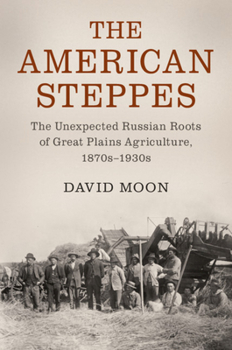The American Steppes
(Part of the Studies in Environment and History Series)
Select Format
Select Condition 
Book Overview
Beginning in the 1870s, migrant groups from Russia's steppes settled in the similar environment of the Great Plains. Many were Mennonites. They brought plants, in particular grain and fodder crops, trees and shrubs, as well as weeds. Following their example, and drawing on the expertise of migr Russian-Jewish scientists, the US Department of Agriculture introduced more plants, agricultural sciences, especially soil science; and methods of planting trees to shelter the land from the wind. By the 1930s, many of the grain varieties in the Great Plains had been imported from the steppes. The fertile soil was classified using the Russian term 'chernozem'. The US Forest Service was planting shelterbelts using techniques pioneered in the steppes. And, tumbling across the plains was an invasive weed from the steppes: tumbleweed. Based on archival research in the United States, Russia, Ukraine, and Kazakhstan, this book explores the unexpected Russian roots of Great Plains agriculture.
Format:Hardcover
Language:English
ISBN:1107103606
ISBN13:9781107103603
Release Date:May 2020
Publisher:Cambridge University Press
Length:352 Pages
Weight:1.70 lbs.
Dimensions:1.1" x 6.5" x 9.1"
Customer Reviews
0 rating





